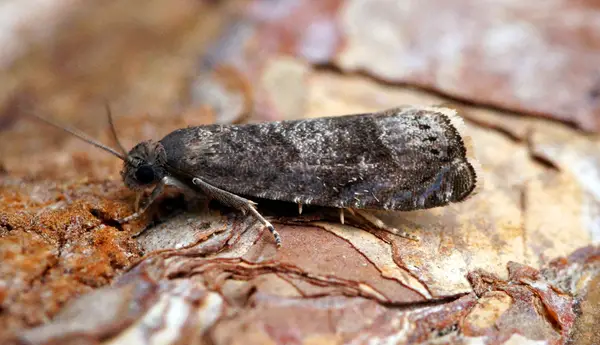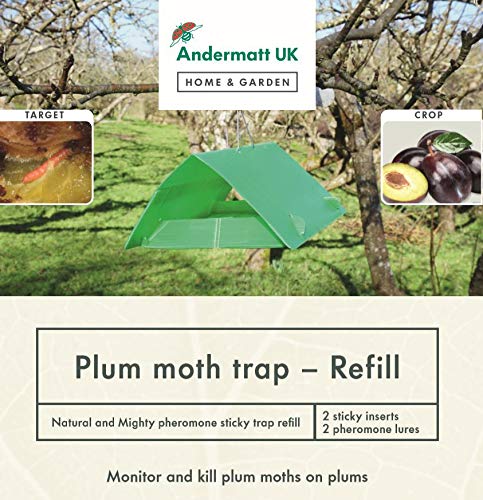Plum moths are one of the more common UK fruit pests and they emerge, after overwintering, around May time. Their initial appearance will manifest as pink caterpillars, or pink plum maggots, and then as moths once mature.

Ben Sale from UK, CC BY 2.0 via Wikimedia Commons.
Plum moths infest plum trees, greengages, and damsons.
Signs of infestation include; premature falling of fruit, misshapen fruit, evidence of caterpillars / plum maggots, and excrement pellets in the fruit.
Jump To...
Plum Moth Treatment & Control
There are several ways of dealing with plum moth infestations and each method will be determined by the stage in the life cycle and how bad the problem is.
Control
Here are some ways you can control the plum moth infestation to minimise damage.
- Regular pruning at the correct times in the year.
- Turn over the soil under your tree or bush to disturb the pupae in March and April.
- Encouraging the birds and other insects into the garden who will predate the plum moths, particularly during their caterpillar stages.
- Pheromone traps can be used to control infestations before they occur.
- You can use organic insecticides that contain natural pyrethrins – several cycles of the spray may be required.
Organic Control
Organic control can be effective and safer to use around other wildlife such as pollinators.
- If the problem is small to moderate, you can leave the issue to run its course. The later fruit to ripen will be largely unaffected so if you can hold out, then do.
- Traps can help monitor the moths you get but won’t control a large infestation.
- Remove any loose bark so that the moths have less places to go during overwinter.
Pesticide Control
Should you need to use pesticide control methods then it’s best to do so using a reputable brand from a reputable seller.
- When using such methods, you need to treat before the caterpillars enter the fruit.
- When using pesticides stick to products with ingredients including; lambda-cyhalothrin, deltamethrin, and cypermethrin.
- If you use a pheromone trap, you will get a good idea of when to begin using the spray.
Plum Moth Identification – Lifecycle
Understanding the lifecycle of a plum moth can help you identify if you do indeed have an infestation. It can also help you pinpoint the best time to take action if you need to. The location of these fruit pests differs during different seasons of the year.
Here’s what they look like during the growing season and also where and when you should be looking out for those telltale signs of an infestation.
Spring & Summer
The moths emerge, mate, and lay their eggs on leaves and shoots. Eggs only take 5-9 days to hatch and then the larvae tunnels into the fruit to feed. Here they remain for around 2 weeks before heading to the soil or bark to pupate. In particularly hot summers, caterpillars may pupate early and produce a second generation.
Autumn & Winter
Plum moths are not active once it gets colder and they overwinter in the bark of the tree or in the soil beneath.
Plum Moth Damage
Plum moths may well be to blame if you notice fruit ripening early and it’s a little misshapen. You may also be easily able to identify plum moths by the caterpillars which will be pink and have a brown head. They can be up to 12mm in length and the adult moths are brown in colour with a wing span of 15mm. You may even spot the tiny white eggs of the plum moths before they hatch.
Other pests that can cause similar symptoms in fruit include:-
For more information on the types of pests that can affect plum trees, see our guide to UK plum pests.




